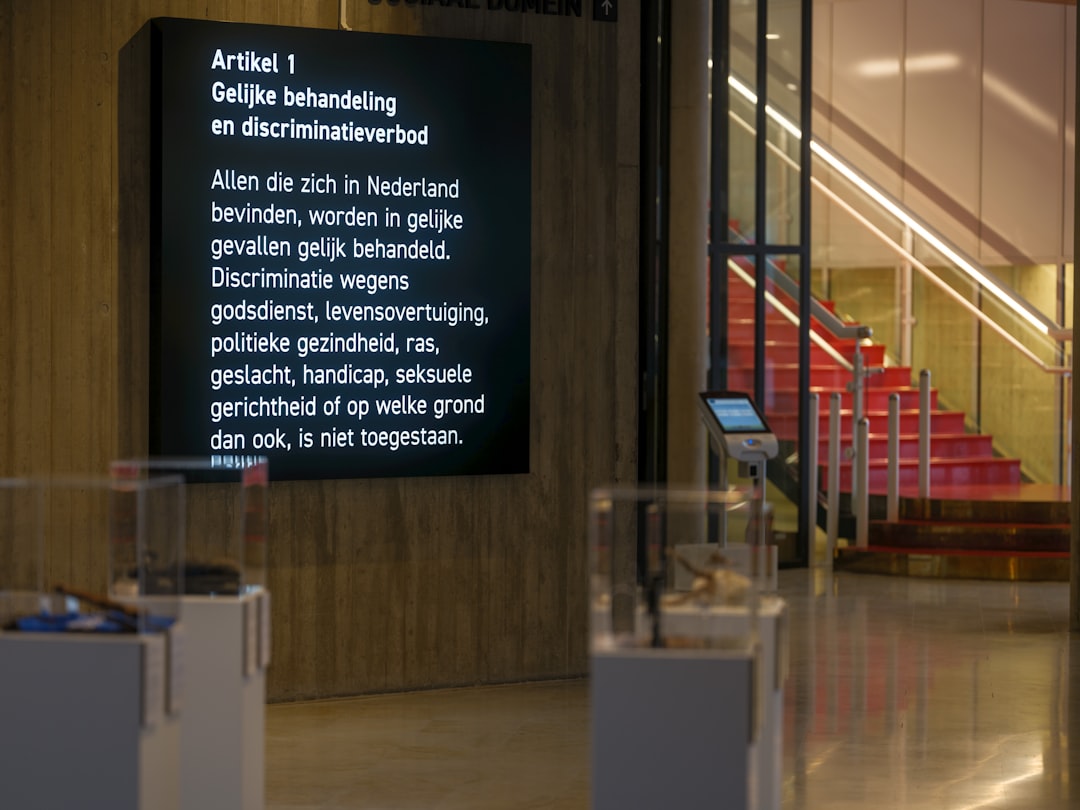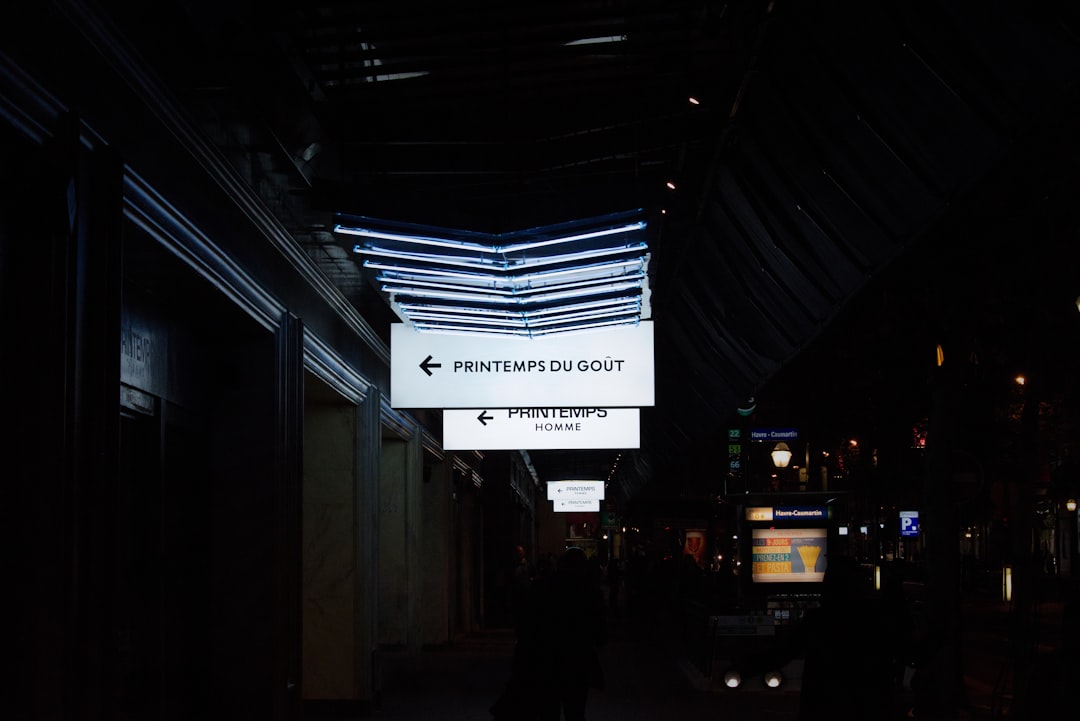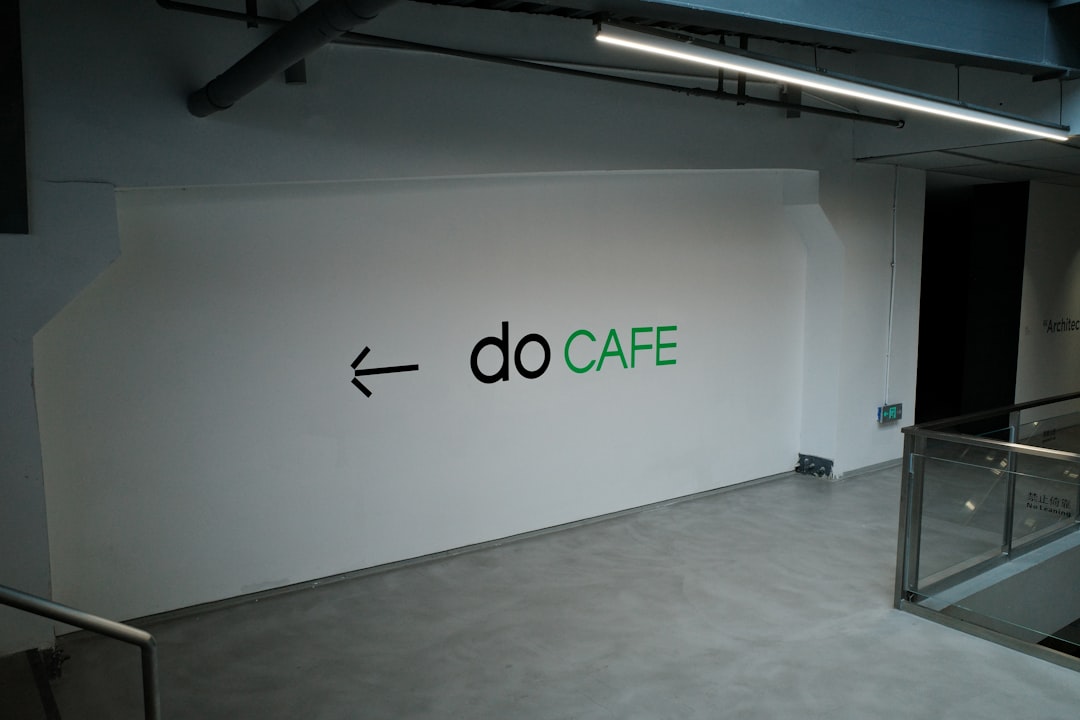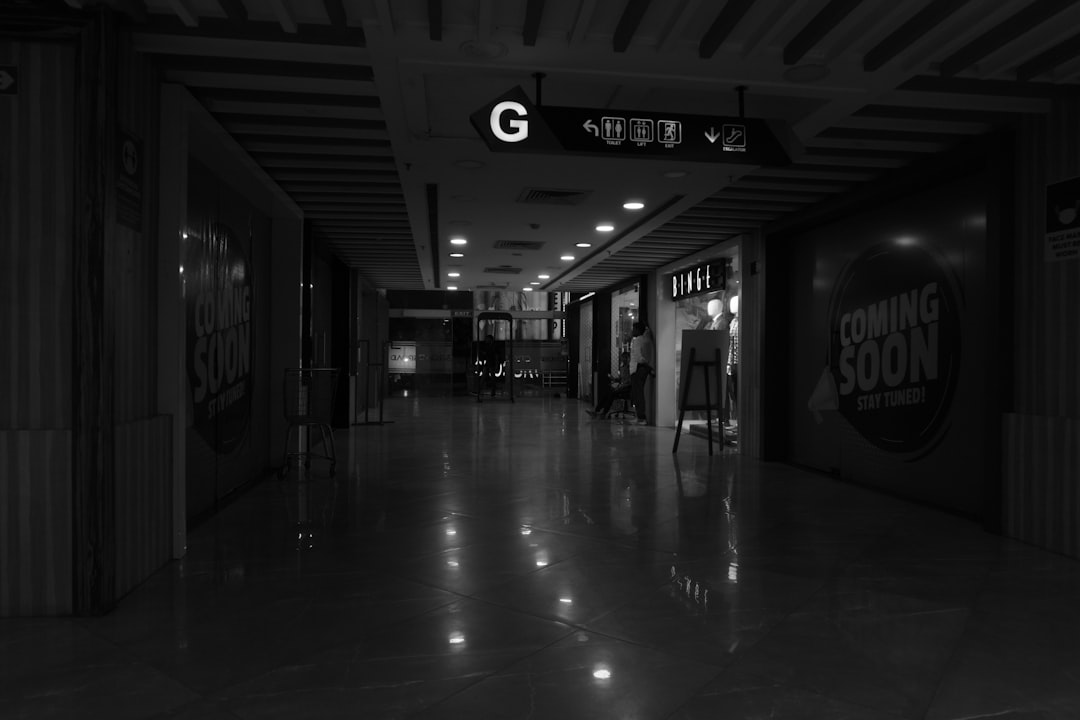

Engage prospects with a scan and streamline customer engagement with FREE QR code marketing tools by Sona – no strings attached!
Create a Free QR CodeFree consultation

No commitment

Engage prospects with a scan and streamline customer engagement with FREE QR code marketing tools by Sona – no strings attached!
Create a Free QR CodeFree consultation

No commitment
Indoor advertising companies face persistent challenges in maximizing customer engagement, capturing high-value prospects, and demonstrating true return on investment for every campaign touchpoint. As consumer attention fragments and the competition for indoor impressions intensifies, the risk of missing out on valuable leads, many of whom interact with advertising without leaving obvious digital footprints, grows sharper. When traditional methods fail to track or connect with these decision-makers, missed opportunities and incomplete analytics become the norm.
QR code marketing has redefined the potential of indoor ad campaigns, introducing an agile and measurable pathway that bridges the gap between fleeting offline interactions and actionable digital outcomes. Whether through digital signage in retail corridors, branded display panels in corporate offices, or event kiosks, QR-driven engagements offer a frictionless user experience, turning brief glances into trackable conversions without reliance on form fills or cumbersome app downloads. This approach directly addresses industry frustrations with anonymous traffic and the limitations of analog measurement.
With modern QR strategies, indoor advertising companies can transition from generic messaging to audience-driven automation. Dynamic QR codes not only streamline segmentation and enable contact enrichment but also help recover opportunities that too often slip through the cracks, such as a high-potential visitor who never fills out a traditional form. This guide details practical approaches and real-world scenarios for weaving QR code technology into every phase of your campaign, ensuring that engagement is measurable, prospects do not go unnoticed, and outcomes can be optimized in real time.

Increasing indoor advertising ROI hinges on capturing not just impressions, but real signals of intent, even from audiences that remain anonymous in conventional CRM systems. In venues like malls, transit hubs, hospitals, universities, and corporate campuses, many high-value prospects engage with content or demos without leaving a trace. QR codes transform these micro-moments into measurable interactions that can be nurtured and attributed to revenue. See the Sona QR marketing guide.
Shifting from analog elements to QR-powered touchpoints allows you to shorten the distance between interest and action. Replacing static posters, paper brochures, and manual sign-up sheets with scannable journeys creates a path to instant follow-ups, personalized offers, and automated workflows. By tracking scan context and behavior, teams can optimize creative and messaging based on real results rather than assumptions.
Through these steps, indoor advertising companies can turn one-way moments into interactive, measurable contacts. The shift from generic outreach to precision-targeted, data-driven strategies ensures that interest is nurtured in real time and attributed accurately to each touchpoint.

Indoor advertising environments are crowded and time-constrained. Audiences are often in motion, distracted, or waiting only briefly. Traditional attribution in these spaces has struggled to tie impressions to outcomes, leading to incomplete data and missed revenue opportunities. QR codes bridge the offline-to-online gap by enabling instant action with a single scan, giving marketers a reliable signal of intent in spaces where web URLs and phone numbers underperform.
Dynamic QR technology also makes indoor campaigns more agile. When a promotion changes or a product sells out, dynamic codes allow you to update the destination instantly without reprinting physical materials. This flexibility reduces waste and ensures your messaging remains current. Beyond convenience, QR scan data illuminates hidden audience patterns, including high-interest clusters by time or location. That insight guides smarter placement and creative iteration.
For indoor advertising companies tasked with proving ROI, QR codes provide the trackability and speed needed to meet modern measurement standards while delivering a better audience experience.

Choosing the right QR format determines how efficiently a prospect can act and how well you can attribute outcomes. Indoor installations span diverse contexts, from retail aisles and healthcare waiting rooms to corporate lobbies and trade show floors. The most useful formats map to common actions in these spaces and reduce friction from interest to conversion.
Web links, vCards, structured forms, and app downloads are particularly effective in venues where attention is limited and signal strength varies. For venues offering guest Wi-Fi, Wi-Fi QR codes can pair connectivity with a frictionless way to gather first-party data. Whenever optimization and measurement matter, use dynamic QR codes to preserve the ability to adjust destinations and capture analytics.
Dynamic QR codes are generally preferred for indoor advertising companies because they enable content updates, granular tracking, and A/B testing without physical reprints. Use static codes only for evergreen, low-stakes destinations like a general help page.
Growth in indoor advertising rarely comes from more impressions alone. It comes from transforming existing foot traffic into measurable engagement and revenue. QR codes create new value where you already have attention: waiting zones, exploration spaces, and transactional moments. By mapping dwell times and audience intent, you can place scannable prompts that convert curiosity into action.
Start with a placement audit to identify underperforming assets and natural high-attention moments. For example, elevator bays offer captive audience marketing; checkout lines are ideal for loyalty enrollment; event booths benefit from quick demo scheduling. Layer in creative experiments, such as rotating offers or time-sensitive incentives, to drive urgency and learn what motivates your audience in each context.
Advanced analytics platforms can attribute scan value by location and time, helping you prioritize the assets that reliably generate revenue. Over time, these insights inform media planning, creative development, and budget distribution.

Indoor advertising companies serve retailers, property managers, event organizers, healthcare providers, and workplace operators. Each environment has distinct journeys that benefit from QR-enhanced engagement. The following use cases address common friction points while delivering measurable outcomes.
Campaigns that convert look simple to the visitor and sophisticated behind the scenes. They use concise CTAs, mobile-first pages, and automated follow-ups. They also connect scan behavior to dynamic audience segments so each interaction strengthens your pipeline and informs optimization.
Each QR scan represents an intent signal that can inform your targeting, creative, and sales follow-up. Rather than treating scans as anonymous clicks, treat them as tagged events within your funnel. You can segment by placement, message, offer, and timing. Over time, this builds a multi-dimensional view of your in-venue audience and powers more relevant remarketing.
Deploy distinct QR codes for different journey stages so the data tells a clear story. For example, a scan on a lobby directory reflects early awareness, while a scan on a product comparison chart shows high intent. Sync these signals to your CRM and ad platforms to trigger immediate and personalized engagement across email, SMS, and paid media. Use Sona’s intent playbook to turn these signals into high-impact retargeting.
Advanced solutions help unify scan signals with other interactions like Wi-Fi sign-ins, loyalty scans, and web visits. The result is a cleaner path from first touch to conversion, with fewer leaks and clearer attribution.
Indoor advertising is most powerful when it is not isolated from the rest of your marketing stack. QR codes link physical assets to digital journeys, enabling consistent messaging and continuous measurement. With each scan tied to a specific placement, you can compare performance across channels and adjust budgets toward the most productive surfaces.
Integrations are the backbone of scale. A centralized QR platform synced to your CRM, MAP, and analytics tools lets you trigger next-best actions instantly. This includes sending a welcome email after a loyalty scan, alerting a rep after a demo request, or adding a scanner to a retargeting audience within minutes.
QR codes serve as a reliable bridge between channels while unlocking a rich new stream of first-party data. With a platform like Sona QR, you can manage codes centrally and monitor performance in real time.
Launching a high-performing QR campaign starts with clarity about the business outcome and the user journey. Each step should connect the physical environment to a digital action with as little friction as possible. When executed methodically, even small deployments can deliver measurable gains while informing your broader strategy.
Use the following process to plan, deploy, and optimize QR campaigns across indoor environments. Adapt the examples to your venues, audience profiles, and primary objectives.
Start by diagnosing the specific friction. Are high-intent visitors leaving without interaction? Are traditional lead forms underperforming in-store or at events? Identify the moment where interest is leaking and define a clear objective that addresses it.
Select a code format and destination based on the action you want. Static codes are fine for evergreen, non-editable resources. Dynamic codes are essential for campaigns that require tracking, flexibility, and optimization.
Design to stand out at a glance. Ensure the code is scannable at the expected distance with proper contrast, a clear quiet zone, and a benefit-driven CTA. Test in real lighting and across common devices.
Distribute your codes where dwell time and intent are strongest. Use a placement map to prioritize lobbies, elevators, checkout lines, food courts, and event booths, then roll out in waves so you can compare cohorts.
Monitor scans, conversion paths, and drop-off points in real time. Use data to refine creative, offers, and destinations. Adjust placements and CTAs to continually improve outcomes.
Siloed or incomplete attribution is a recurring frustration among indoor advertising leaders. Counting impressions without connecting them to outcomes leaves campaign teams guessing at what actually works. QR-driven campaigns provide a more definitive signal. They not only show that someone engaged, but also reveal what happened next, including conversions, follow-ups, and revenue impact.
A mature analytics approach spans the entire path from scan to sale. It stitches together identity, context, and behavior across placements and channels. With platforms like Sona QR and Sona, an AI-powered marketing platform, teams can unify fragmented touchpoints and prove the contribution of indoor media to the pipeline.
With Sona QR you can track every scan and measure engagement by channel and context in real time. Sona.com connects anonymous scans to known buyers through identity resolution and multi-touch attribution, helping you map scans to pipeline and revenue while unifying offsite and onsite activity across the buying journey.
Scaling success means treating QR not as a gimmick but as a performance channel. Focus on clarity, speed, and follow-through. Make every scan count by connecting it to a workflow that delivers value instantly and sets up the next step in the journey.
Choose the tactics that best fit your venues and goals. Train on-site staff to seed engagement and keep experimentation alive with rapid iteration cycles and clear success criteria.
Creative deployment examples include loyalty QR codes printed on table tents in food courts and scannable service stickers in restrooms that route to instant feedback. Both generate actionable data at high-intent moments and feed into real-time optimization. For more context on execution, review best practices in QR code marketing.

Market leaders are outpacing competitors by using QR codes to expose and fix the invisible friction points that undermine indoor campaigns. They replace passive assets with interactive ones, then layer measurement to continuously refine creative and placement. The result is not just more scans but better-qualified engagement and clearer attribution to revenue.
Consider a retail corridor campaign that replaced static posters with interactive product displays. By linking to short videos and limited-time offers, the team tripled scan rates, doubled coupon redemption, and traced a measurable lift in in-store conversions. Another example is a conference activation that used QR check-in and on-badge session feedback to cut registration lines in half, increase feedback participation fourfold, and accelerate post-event follow-ups by syncing segments directly into the CRM with tags for session interest and seniority.
Increasingly, best-in-class programs blend QR with IoT sensors or digital signage that updates creative based on inventory, time of day, or audience density. These campaigns shorten the time from insight to action and minimize wasted impressions. The leaders also take privacy and compliance seriously, offering transparent value exchanges, consent prompts, and data minimization, which protects trust while maintaining rich analytics.
Indoor advertising companies that confront broken attribution, missed follow-up, and incomplete signals are redefining what is possible in high-traffic environments. QR codes, when integrated into campaign design, analytics, and CRM workflows, unlock value that analog methods cannot capture. Every scan becomes a chance to learn, segment, and convert, turning previously anonymous interactions into measurable business outcomes.
The companies pulling ahead are those that treat QR as a strategic connector across media, not a one-off tool. They set clear objectives, deploy codes where dwell time and intent are highest, and sync results into a centralized system that powers remarketing and sales engagement. With a platform like Sona QR, you can manage codes at scale, measure performance in real time, and connect offline engagement to pipeline and revenue through Sona.com. Start creating QR codes for free at Sona QR.
As competition intensifies and expectations rise, the ability to transform every surface into a digital entry point will set new benchmarks for accountability and growth. The path forward is clear: design for action, instrument for insight, and iterate with speed. When you do, indoor advertising stops being a cost center and becomes a proven engine for conversions.
QR codes have transformed indoor advertising companies from static displays into dynamic, measurable conversion engines. By integrating QR codes, these companies can not only attract new customers but also elevate the indoor ad experience through instant, interactive engagement and real-time data capture—turning every poster, kiosk, or screen into a powerful driver of actionable insights.
Imagine knowing exactly which indoor advertising placements generate the most interest and conversions—and being able to optimize campaigns on the fly without costly reprints. With Sona QR, you can create dynamic, trackable QR codes in seconds, update campaigns instantly, and directly link every scan to revenue outcomes. No guesswork, no missed opportunities—just smarter, more effective indoor advertising.
Start for free with Sona QR today and transform every scan into a measurable step toward greater customer acquisition and revenue growth.
Indoor advertising companies use QR codes to turn brief offline interactions into measurable digital engagements by placing dynamic, scannable codes on digital signage, displays, and kiosks that link to personalized offers, demos, or forms, enabling real-time tracking and follow-up without friction.
Indoor advertising increases brand exposure in high-traffic venues by capturing intent signals from audiences in captive moments, enabling targeted messaging, measurable engagement, and improved ROI through data-driven optimization and seamless offline-to-online customer journeys.
By placing scannable QR codes at natural dwell points like elevators, waiting areas, and checkout lines, indoor advertising transforms passive impressions into interactive experiences that educate, engage, and convert visitors, while providing insights to optimize messaging and placement for maximum exposure.
Small businesses can use QR codes on posters, brochures, digital screens, and product displays to offer instant coupons, loyalty enrollment, or demo scheduling, focus on high-attention areas like reception desks and food courts, and track scan data to refine offers and improve conversion rates.
Success can be measured by tracking QR code scans, conversion rates such as demo bookings or coupon redemptions, dwell time on landing pages, and integrating scan data with CRM and analytics platforms to attribute offline interactions to revenue and optimize campaigns in real time.
Use Sona QR's trackable codes to improve customer acquisition and engagement today.
Create Your FREE Trackable QR Code in SecondsJoin results-focused teams combining Sona Platform automation with advanced Google Ads strategies to scale lead generation

Connect your existing CRM

Free Account Enrichment

No setup fees
No commitment required

Free consultation

Get a custom Google Ads roadmap for your business






Launch campaigns that generate qualified leads in 30 days or less.
